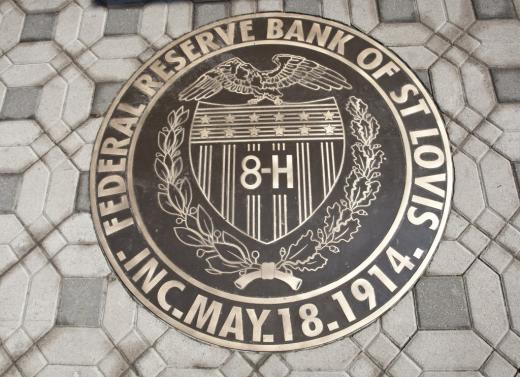Fed Again Cuts Interest Rates 0.25 percentage points, which was widely expected, brings the Fed’s target rate to a range of 1.5% to 1.75%. Less clear is where central bankers go from here amid signs the economy is slowing down.
The Federal Reserve has lowered its benchmark interest rate for the third time this year, in a bid to shore up U.S. economic growth. The central bank also signaled that this rate cut might be the last in a while, barring a sharp downturn in the economy.
Addressing reporters Wednesday afternoon, Fed Chairman Jerome Powell implied the economy had stabilized and that the U.S. is potentially at a turning point in its trade wars.
“We now have a phase one trade agreement with China, which, if signed, could go toward reducing trade tensions, and would bode well for business confidence over time,” he said. In addition, “It appears that the risk of a no-deal Brexit seems to have materially declined,” he noted.
The Fed’s statement also dropped a reference to sustaining the economic expansion and instead said it would “continue to monitor the implications of incoming information” as it determines “the appropriate path” for interest rates.
The shift is “a clear sign that the Fed thinks it has done enough for now to achieve the mid-cycle adjustment in interest rates they believe is necessary to limit risks to the U.S. expansion from global developments,” Brian Coulton, chief economist at Fitch Ratings, said.
Earlier on Wednesday, government data showed that the economy grew at a 1.9% annual rate in the July-to-September quarter. That is down from 3.1% in the first quarter and 2.9% for the year-ago period.
The Fed has now nearly completely reversed the four rate hikes it made last year in response to a strengthening economy. While some investors are hoping for a fourth rate cut this year, others say that is premature.
“As long as economic readings stabilize and inflation continues to edge higher, we do not think that the Fed will ease again in December,” Ben Ayers, senior economist at Nationwide, said in a note.
Ayers added that financial markets are predicting less than a 1-in-4 chance of another rate cut before 2020. “There is higher degree of uncertainty than usual, however, and a negative turn in growth readings or geopolitics could prompt further stimulus from the Fed to sustain the expansion,” he said.
Other changes to statement
The statement continued to view the labor market as one that “remains strong” and economic activity as “rising at a moderate rate.” Descriptions of virtually all other benchmarks of activity remained unchanged, though the committee made a minor tweak regarding business fixed investment and exports to note that they “remain weak.”
The decision comes the same day that the government reported GDP growth of 1.9% that, while reflecting a deceleration, was above Wall Street estimates for 1.6%. Job gains, meanwhile, have slowed in recent months but are well above the 109,000 or so that the Atlanta Fed estimates are necessary to keep the unemployment rate at the 50-year low of 3.5%.
In addition to the solid performance in the jobs market and in consumer spending, stock market averages are around new highs.
Within the Fed, there has been disagreement about whether additional cuts are needed. Regional presidents Esther George of Kansas City and Eric Rosengren of Boston again voted against a reduction, with both maintaining that the committee should have held the line at the previous rate.
President Donald Trump, on the other hand, has pushed hard for the Fed to keep cutting rates and to resume the quantitative easing program the central bank used during and after the financial crisis to stimulate the economy.
The Fed has been buying bonds again, but officials insist it is an effort to stabilize the funds rate within the target range rather than a resurrection of QE. Still, the central bank balance sheet has expanded by about $100 billion over the past month and is back above the $4 trillion mark, $3.6 trillion of which is in Treasurys and mortage-backed securities.
The expansion was due mostly to growth in Treasurys and T-bills.
Wednesday’s statement reflects the recent balance sheet expansion, noting that open market operations will continue at least into the second quarter of 2020, while term and repo operations aimed at stabilizing overnight markets will continue at least through January.
